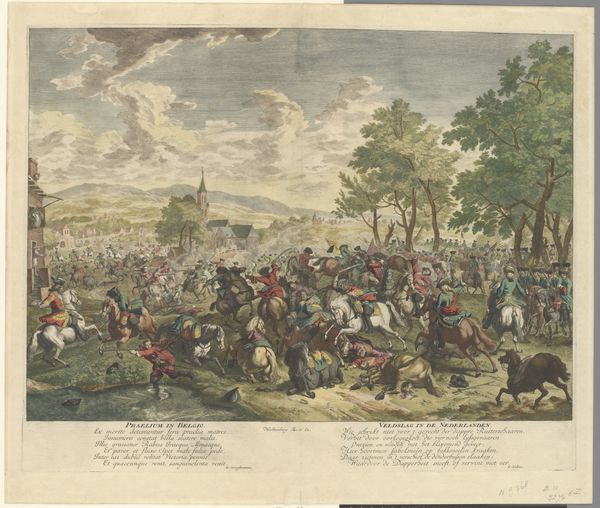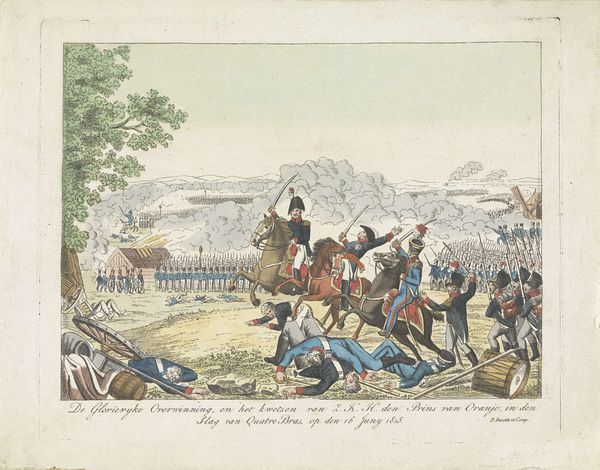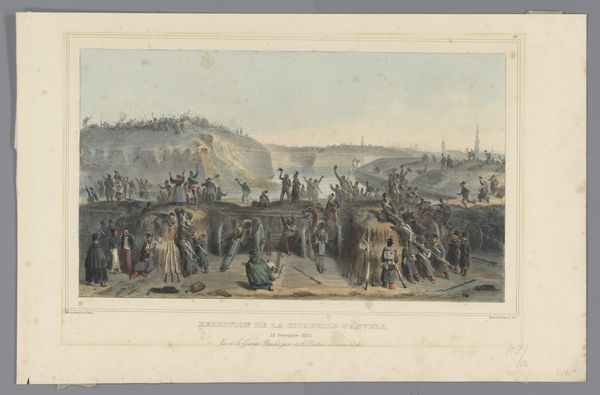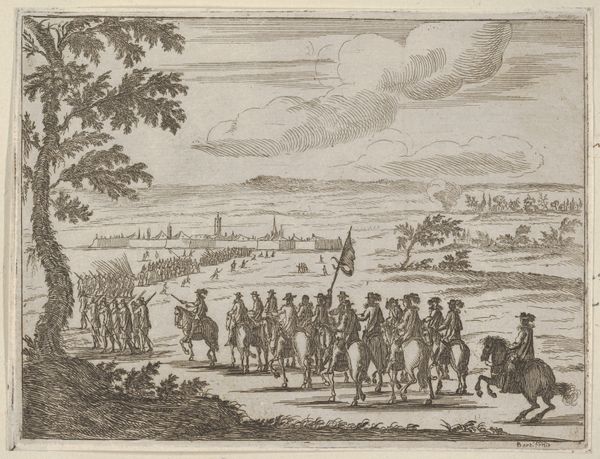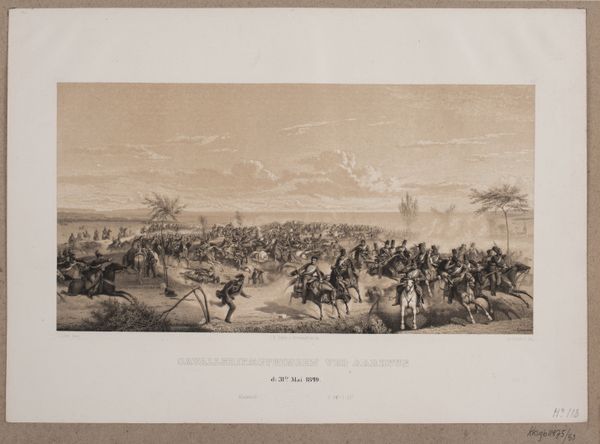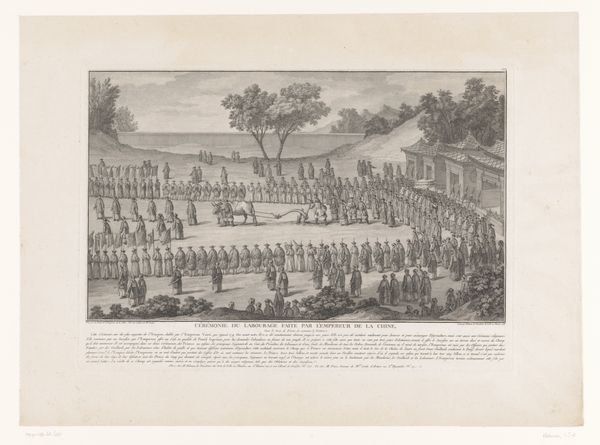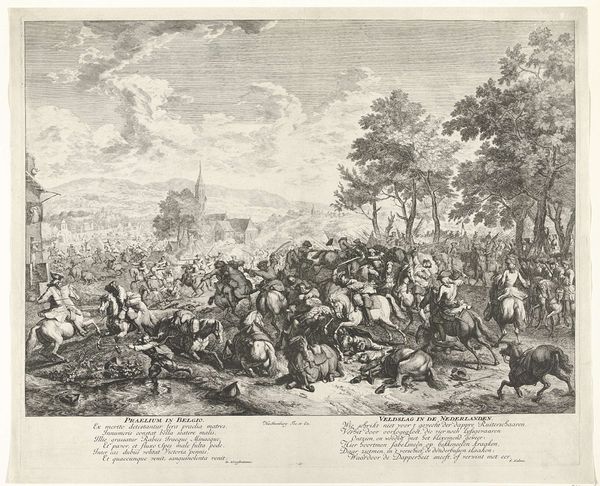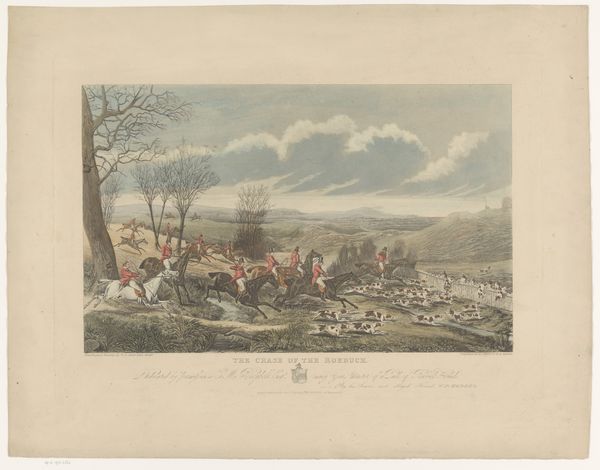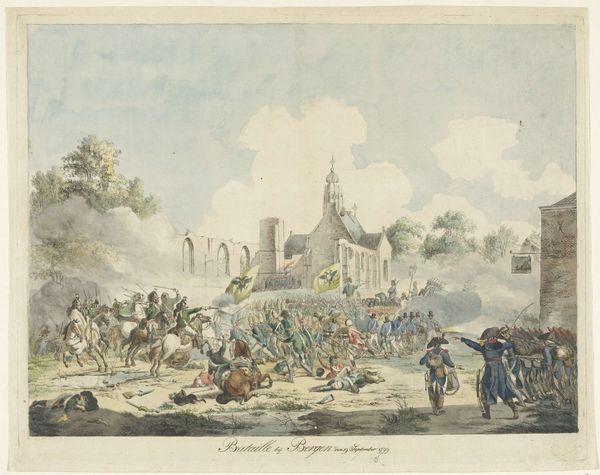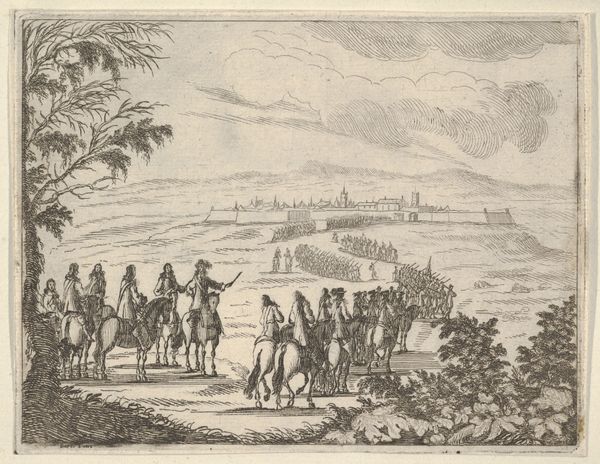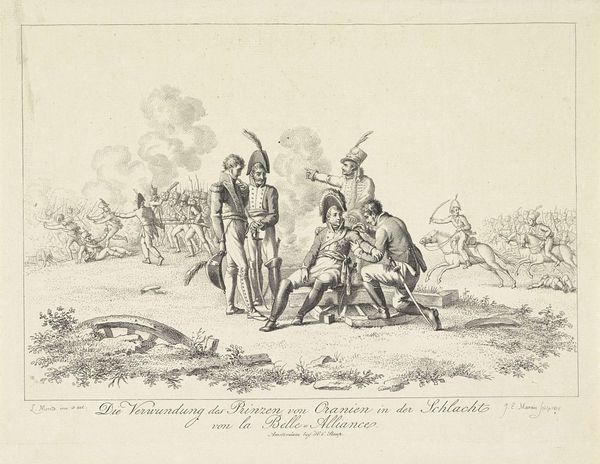
print, watercolor
# print
#
landscape
#
watercolor
#
coloured pencil
#
romanticism
#
watercolour illustration
#
history-painting
#
watercolor
Dimensions: height 335 mm, width 421 mm
Copyright: Rijks Museum: Open Domain
Curator: Here we have a print titled "De slag bij Waghäusel, 1849," which translates to "The Battle of Waghäusel," dating from 1849-1850. It's rendered in watercolor and coloured pencil. My immediate impression is how incredibly detailed and yet light the work feels, almost ethereal considering it depicts warfare. Editor: "Ethereal" is a great word for it. Look at how flat those colours are. The hand-rendered element makes you hyper-aware that this is, after all, ink and pigment, ground minerals. Those delicate materials belie the heavy industry required to make cannons or to kit out soldiers. Curator: It feels less like a straightforward battle scene and more like a carefully constructed stage, doesn't it? The foreground figures almost seem posed, as though conscious of being observed. Perhaps, like figures in a puppet show, destined to play their roles for all eternity in the grand theatre of time. The landscape is quite Romantic. Editor: Stagecraft, indeed. Notice the positioning of the soldiers—both living and, presumably, fallen. How artfully they are arranged. Even their jackets, their tools and weaponry; all products made by someone, someplace, to fulfil their intended service. This battle was material for many; both practically in war profiteering, and literally for Anonymous in its re-presentation through image. Curator: And it’s that detachment, that "removal" from the actual experience, that allows for the almost fantastical treatment. I'm intrigued by the soft colour palette—almost as if violence is being reimagined through the soft lens of memory or dream. There is a naive elegance. Editor: Naive maybe in its construction—I wouldn't call watercolour battles especially refined when compared to an oil painting of the period, perhaps—but this, too, highlights the labour involved in the work; these are skills developed in making the picture itself; a means by which war's narrative can spread. This, also, is someone's service. Curator: Exactly. It speaks to the many levels of labor embodied. It gives "romanticized landscape" new dimension. I leave here feeling it's both beautiful and somehow terribly empty, not a judgement, more like… an open ended, historical sigh. Editor: Right. To appreciate how things were is only to see how they could be, now. The painting, then, and how the paintings are made all combine as matter; to produce yet another new product - us! Reflecting back upon them, anew.
Comments
No comments
Be the first to comment and join the conversation on the ultimate creative platform.
